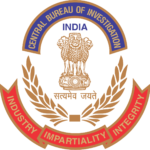Budget FY22 has placed topmost priority on the healthcare sector in an unprecedented manner. More importantly, it recognised the interlinkages of health with nutrition, water and sanitation facilities that reinforce one another. Allocation for the health and wellness sector increased mainly on account of increased allocation on water and sanitation that increased from Rs 21,500 crore to Rs 60,000 crore, Finance Commission grants and Rs 35,000 crore for Covid-19 vaccination. However, the allocation to the core health sector including health research and AYUSH recorded only a rise of 11% in its allocation compared to 2020-21 BE.
The launch of the PM Atmanirbhar Swasth Bharat Yojana (PM-ANSBY), with an outlay of Rs 64,180 crore over six years, which aims to develop capacities at various level of the health system and make new institutions and strengthen existing ones, maybe a giant leap to strengthen the health system within the country. However, the budget allocation for the National Rural Health Mission (NRHM)—which is that the core of the National Health Mission (NHM)—in 2021-22 BE recorded a growth of 11% compared to 2020-21 BE and remains unchanged compared to 2019-20 Actuals. A gradual introduction of the PM-ANSBY with increased allocation for the NHM within the initial years would ease the rollout of the programme because the existing health ecosystem has two operational flagship programmes—the NHM and therefore the Ayushman Bharat—focusing on similar health dimensions.
In addition to the event of the health ecosystem, its regulation is equally important. Regulation of the health sector for quality, standard of care, assessment of service providers and hospitals and accountability is crucial for the health sector. Efficient and effective regulatory infrastructure is urgently needed within the healthcare sector. The Budget FY22 mentions the introduction of the allied health services Bill that has been introduced and therefore the nursing and midwifery Bill are going to be introduced soon. aside from these Bills, there are several other medical services like dentistry and pharmacists, etc, which come under the purview of various laws, rules and regulations. there’s a multiplicity of Acts, rules and regulations and mushrooming of institutions, yet the regulation of the world is way from adequate. As such, there’s a requirement for rationalisation, standardisation of medical services and development of an entire Health Care Code (HCC) for the health ecosystem on similar lines as announced within the allow the securities markets (Securities Market Code). Also, to supply evidence-based guidance, develop quality standards and supply information to stakeholders involved in the healthcare sector, a national institute must be established, almost like National Institute for Health and Care Excellence within the UK.
Furthermore, the ‘missing middle’ in terms of accelerating insurance penetration has become prominent. While the PMJAY covers rock bottom two income quintiles, commercial insurance largely covers the top income quintile, thereby creating a ‘missing middle’ class in between. This refers to people within the middle two income quintiles, where the population isn’t rich enough to afford commercial insurance and not poor enough to be covered under government-sponsored insurance schemes. Universalisation of healthcare insurance is the ultimate goal that has no exclusion in terms of disease or category of persons.
Health infrastructure in tier-2 and tier-3 cities may be a major bottleneck. Support to existing small hospitals to extend the dimensions of hospitals must be provided, say, by giving them an easy credit line. Technical support to small hospitals to standardise and outsource backend functions like procurement, empanelment with insurance companies, finance activities, etc, is needed. Further, providing single-window clearance, as against numerous clearances required currently, would generate more investment and boost private-public partnership.
Additionally, the health sector is in dire need of a health developmental financial organization (DFI). Budget FY22 mentioned fixing a DFI to stimulate investments with an initial corpus of Rs 20,000 crore. the necessity for a health-sector-specific DFI is far needed on an equivalent line as that of DFIs for other sectors like NABARD (agriculture), NHB (Housing) and TFCI (tourism). Such a health sector DFI would increase healthcare access in tier-2 and tier-3 cities and also are available with technical assistance that ensures proper usage of funds.
Ensuring effective monitoring and quality of healthcare services would require extensive use of data and communication technology (ICT). Availability of doctors must be tracked on a real-time basis to tackle absenteeism and use of patient feedback mechanism to enhance the standard of care publicly health facilities, particularly in rural areas. These might be done by leveraging mobile penetration within the country.
Increased health spending, creation of health sector DFI, reducing compliance burden, increased use of ICT and universal healthcare insurance alongside adequate regulatory oversight through a national level health sector regulator/institute holds the key for building a strong healthcare ecosystem in India. Budget FY22 has made an optimistic beginning on this front that must be carried forward. The battle is won; the war must be won, too.




